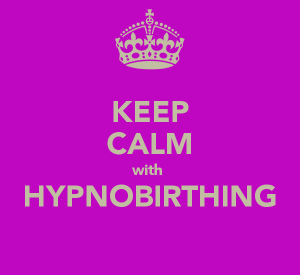Hypnobirthing
Hypnobirthing
by Katharina Bishop
“Think you can, think you can’t, either way you’re right.” -Henry Ford
Hypno-birthing, also known as self-hypnosis or autosuggestion during childbirth, is the use of hypnosis to achieve maximum relaxation, comfort, and pain relief during childbirth.
The hypno-birthing method is based on the work of Grantly Dick-Read, MD, an English obstetrician and author of the highly influential book Childbirth Without Fear, which was first published in 1944.
According to Dr. Dick-Read, the use of self-hypnosis during labor helps laboring women avoid the ‘Fear-Tension-Pain Syndrome’ which makes labor more painful, stressful and difficult than intended by nature. He argued that pain in labor is largely due to tension caused by fear, which in turn increases pain. This vicious circle of fear, tension and pain destroys confidence, relaxation, and self-control during labor. Dr. Dick-Read believed that the syndrome caused blood to flow away from nonessential organs such as the uterus to large muscle groups in the legs. His theory proposed that relaxation achieved through self-hypnosis would prevent this undesirable, obstructive physiological process.
The process of hypno-birthing is based on the power of (auto-)suggestion. The laboring woman uses positive affirmations, suggestions, and visualizations to relax her body, guide her thoughts, and control her breathing. She can either do this herself (self-hypnosis) or receive assistance from a qualified hypnotherapist. Sometimes women work with a certified hypnotherapist to learn self-hypnosis.
A popular method is to frequently play a tape of verbal affirmations that assist in entering a calm state of self-hypnosis. Alternatively, visualizations may be used (for example, picturing the cervix as a flower opening its petals) with the aim of imagining the process of birth in positive terms, and thus achieve relaxation.
Hypnosis is not only used to assist with labor and the birth process but also for pregnancy complications such as morning sickness, backaches, insomnia, and fatigue. Hypnosis has been shown to have the following benefits:
- Eliminates the fear before, during, and after birth
- Reduces the need for anesthesia
- Eliminates or reduces fatigue during labor
- May shorten the first stage of labor by several hours
- Assists in the bonding process between parents and infant
- Facilitates a swift and easy postnatal recovery
- Babies born using hypno-birthing tend to be better adjusted and more alert due to being born drug free, this in turn facilitates a successful nursing relationship
- Birthing is returned to the beautiful experience that nature intended – very calm, relaxing, and peaceful.
Several scientific studies have been carried out on the use of hypnosis for pregnancy and labor.
A study done at the University of Hawaii investigated the use of hypnosis to turn babies from breech to vertex presentation (bottom down to head down). In a group of 100 women with breech presentation at 37 to 40 weeks, there was an 81% success rate with hypnosis compared to only 48% in the control group. (1)
In a Wisconsin study, the benefits of hypnotic analgesia used in combination with childbirth education were studied in 60 first time mothers. The women were divided into high and low hypnotic susceptibility groups before receiving six sessions of childbirth education and skill mastery using an ischemic pain task. Half of the women in each group received a hypnotic induction at the beginning of each session; the remaining women (the control subjects) were taught relaxation and breathing exercises typically used in childbirth education.
Both hypnotized women and highly susceptible unhypnotized women reported reduced pain during the pain task. Hypnotically prepared women had shorter first-stage labors, less medication, infants with higher Apgar scores, and were more likely to have spontaneous deliveries than the control group. Highly susceptible, hypnotically treated women had lower depression scores after birth than women in the other three groups. The study authors suggested that repeated skill mastery (practice at the pain task) increased the effectiveness of hypnosis in their study.


